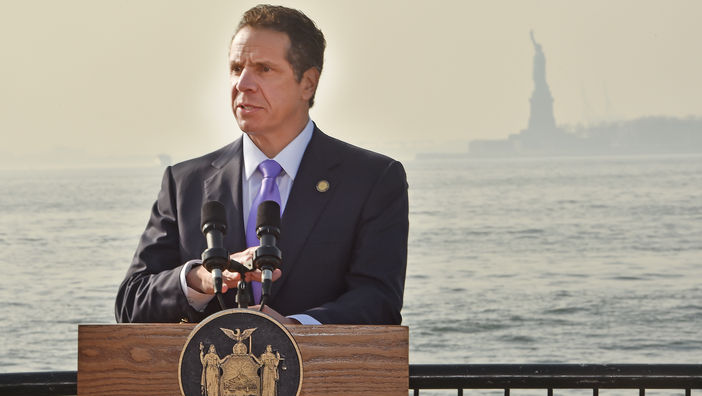Workers recently discovered that more than a quarter of the bolts holding the core former and core baffle plates together inside the Unit 2 reactor vessel at Indian Point in Buchanan, New York were degraded and required replacement. The bolts had not been routinely inspected since the reactor began operating in the mid-1970s. And the bolts may not have been inspected this year but for the efforts of the state of New York.
Degraded bolts could have serious nuclear safety consequences. The bolts hold together metal plates that direct cooling water flow through the reactor core. Degraded bolts could allow plates to gap or even separate, providing pathways for water to bypass the reactor core, potentially leading to a meltdown.
What led to this important inspection?

AG Schneiderman (Source: State of NY)
Indian Point’s owner applied to the U.S. Nuclear Regulatory Commission (NRC) in 2007 for a 20-year renewal of the operating licenses for the Unit 2 and 3 reactors. The state of New York, through the Office of the Attorney General, intervened. Among other things, New York contended that the aging management program for the reactor vessels and their internal components (including the bolts) was inadequate. The owner and the NRC initially disagreed with New York, contending that existing inspection programs were sufficient.
New York defended its contention during the license renewal proceeding before a three-person Atomic Safety and Licensing Board formed by the NRC. The proceeding is ongoing, but New York’s defense was so compelling that in July 2010, the owner sent the NRC an amendment to its license renewal application committing to inspect the reactor vessels and their internal components using a standard developed by the Electric Power Research Institute (EPRI). Workers using this EPRI standard inspected the former-baffle bolts on Unit 2 last month and discovered significant degradation.

Gov. Cuomo (Source: State of NY)
The NRC also changed its tune. In July 2011, it notified owners of all other pressurized water reactors in the United States like those at Indian Point that they would have to follow the EPRI standard in the aging management of reactor vessels and their internal components. The NRC even required the reactors it had already relicensed to apply this EPRI standard.
I wrote a letter to Governor Andrew M. Cuomo and Attorney General Eric T. Schneiderman of New York expressing our appreciation for their efforts. Thanks to the state of New York, millions of Americans in New York and across the country will be better protected from the risk posed by aging nuclear power reactors. The inspections now required at all pressurized water reactors as a result of the New York’s efforts will help prevent degradation from leading to disaster.
